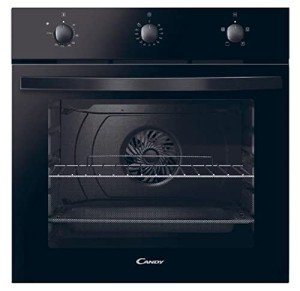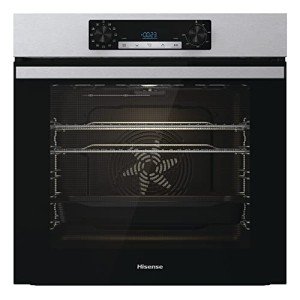cheap-single-oven9352
cheap-single-oven9352
15 Top Pinterest Boards Of All Time About Single Oven
The Ultimate Guide to Single Ovens: Features, Benefits, and FAQs
When it concerns contemporary kitchen devices, the single oven stands out as a versatile and essential tool for any cooking lover. In today’s fast-paced world, where convenience fulfills cooking craftsmanship, single ovens play an essential role in meal preparation. Comprehending the functions, benefits, and kinds of single ovens can simplify the procedure of picking the perfect device for your kitchen. This detailed guide intends to provide a thorough look at single ovens, their specifications, and responses to frequently asked questions.
What is a Single Oven?
A single oven is a kitchen home appliance that features one primary cooking compartment. It is developed to perform various cooking functions such as baking, roasting, broiling, and more. Unlike double ovens, that include two different cavities, single ovens optimize space performance, making them ideal for smaller kitchen areas or those who regularly prepare meals for a few people.

The Anatomy of a Single Oven
In order to appreciate the performance of a single oven, comprehending its essential components is necessary:
| Component | Description |
|---|---|
| Cooking Cavity | Main area where food is placed for cooking. |
| Control board | Interface for choosing cooking modes and adjusting temperature level. |
| Heating Elements | Metal coils that generate heat (often found at the top and bottom). |
| Oven Door | Glass panel that enables visibility into the cooking area. |
| Racks | Removable shelves that accommodate different meals at various heights. |
Kinds Of Single Ovens
Single ovens can be found in numerous types based upon their heating methods and designs. Here are some popular choices:
-
Conventional Ovens: Utilize gas or electricity for a standard cooking experience. They supply consistent heat for baking and roasting.
-
Convection Ovens: Equipped with a fan that distributes hot air, leading to much faster cooking times and even heat distribution.
-
Steam Ovens: Use steam to cook food, maintaining moisture and nutrients. Suitable for much healthier cooking approaches.
-
Wall Ovens: Built into the wall to save space; they can boost kitchen aesthetics while offering performance.
-
Microwave Ovens: While not a conventional oven, modern-day microwave can likewise bake and roast, offering benefit for fast meal preparation.
Features to Look for in a Single Oven
When acquiring a single oven, consider the following features to guarantee you choose an appliance that fits your cooking requires:
-
Capacity: Ensure the oven’s size accommodates your typical cooking volume. Requirement capabilities typically range from 4.5 to 6 cubic feet.
-
Temperature level Range: Look for an oven that provides a wide temperature level range for various cooking strategies.
-
Self-Cleaning Options: Self-cleaning modes bypass the need for severe chemicals, making upkeep simpler.
-
Smart Technology: Wi-Fi-enabled models allow remote operation and monitoring through smartphone applications.
-
Interior Lighting: Bright, incandescent or LED lighting assists monitor your food without opening the door.
Typical Sizes and Capacities of Single Ovens
| Type | Average Capacity (cubic feet) | Width (inches) | Height (inches) |
|---|---|---|---|
| Standard Conventional | 5.0 – 6.0 | 30 | 28 – 30 |
| Compact/Apartment Size | 3.0 – 4.0 | 24 | 28 – 30 |
| Wall Oven | 4.5 – 5.0 | 24 – 30 | 28 – 30 |
Advantages of Using a Single Oven
Investing in a single oven uses many benefits for both amateur cooks and experienced chefs alike:
-
Space Efficiency: A single oven inhabits less space than a double oven, making it best for smaller kitchen areas.
-
Economical: Generally cheaper compared to double ovens, both in initial purchase and energy consumption.
-
Versatility: Capable of carrying out various cooking strategies, making it ideal for a variety of dishes.
-
Relieve of Use: With a smaller sized cooking location, heat circulation tends to be more effective, simplifying the cooking process.
-
Maintenance: Fewer parts suggest less intricacy when it pertains to cleansing and repairs.
Regularly Asked Questions (FAQs)
What is the typical lifespan of a single oven?
A single oven normally lasts in between 10 to 15 years, depending on use, maintenance, and the quality of the appliance.
How can a single oven save energy?
Single ovens require less power than double ovens, and numerous designs are designed with energy performance in mind, minimizing general energy usage.
Can a convection oven replace a basic oven?
Yes, a stove can change a standard oven as it uses comparable cooking functions alongside much faster cooking times.
Are single ovens appropriate for large families?
While single ovens can accommodate a good amount of food, larger families might discover that a double oven or an extra single oven suits their requirements better.
How often should I clean my single oven?
It what Is a single oven recommended to clean your oven every three to 6 months, depending upon usage, to maintain health and performance, particularly with models that feature self-cleaning options.

Is installation difficult for a single oven?
Most single ovens included simple installation instructions. However, speaking with a professional is suggested for safe and proper setup, especially for gas ovens.
The single oven remains a cornerstone device in cooking areas all over the world. Its versatility, efficiency, and space-saving design make it an appealing alternative for numerous homes. Whether you are a periodic cook or a culinary aficionado, picking the right single oven can significantly improve your cooking experience. With the information shared in this guide, possible buyers can make an informed decision, guaranteeing they choose an oven that best suits their cooking needs and way of life.
